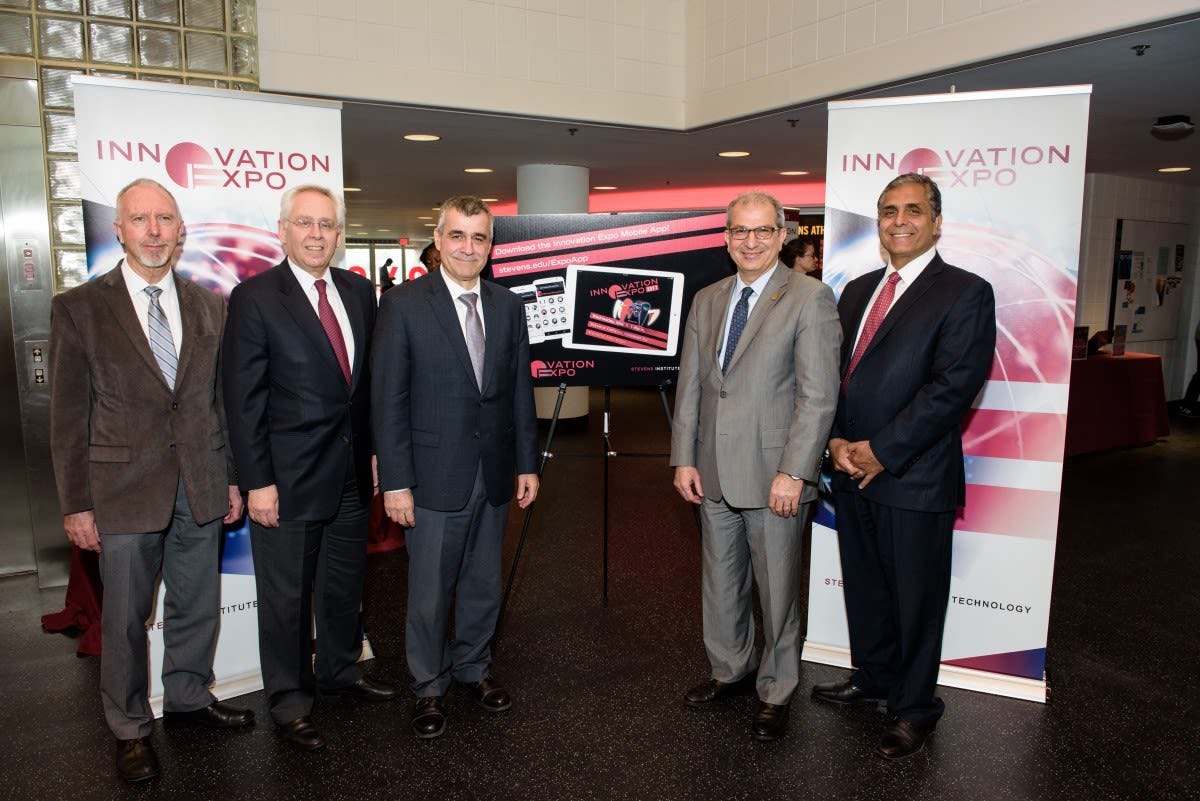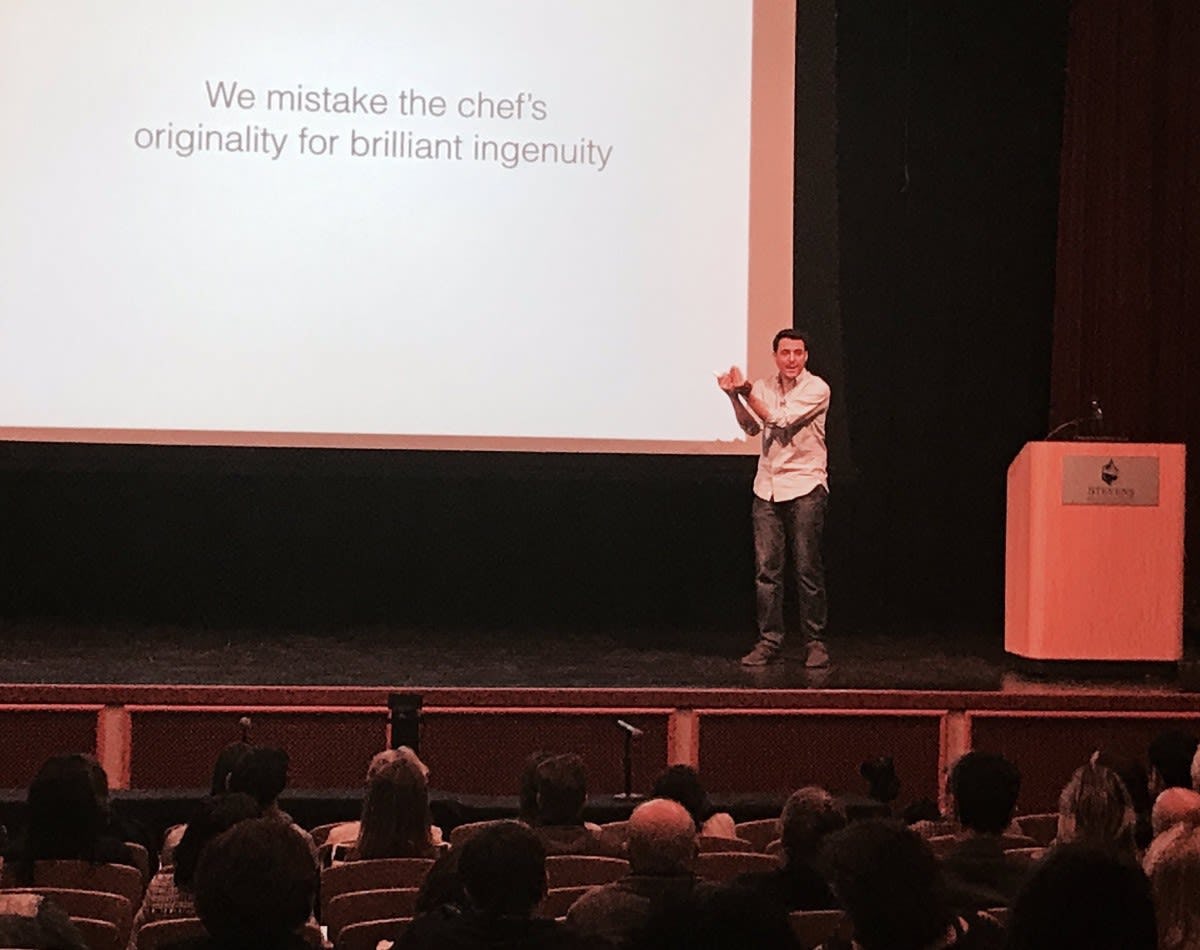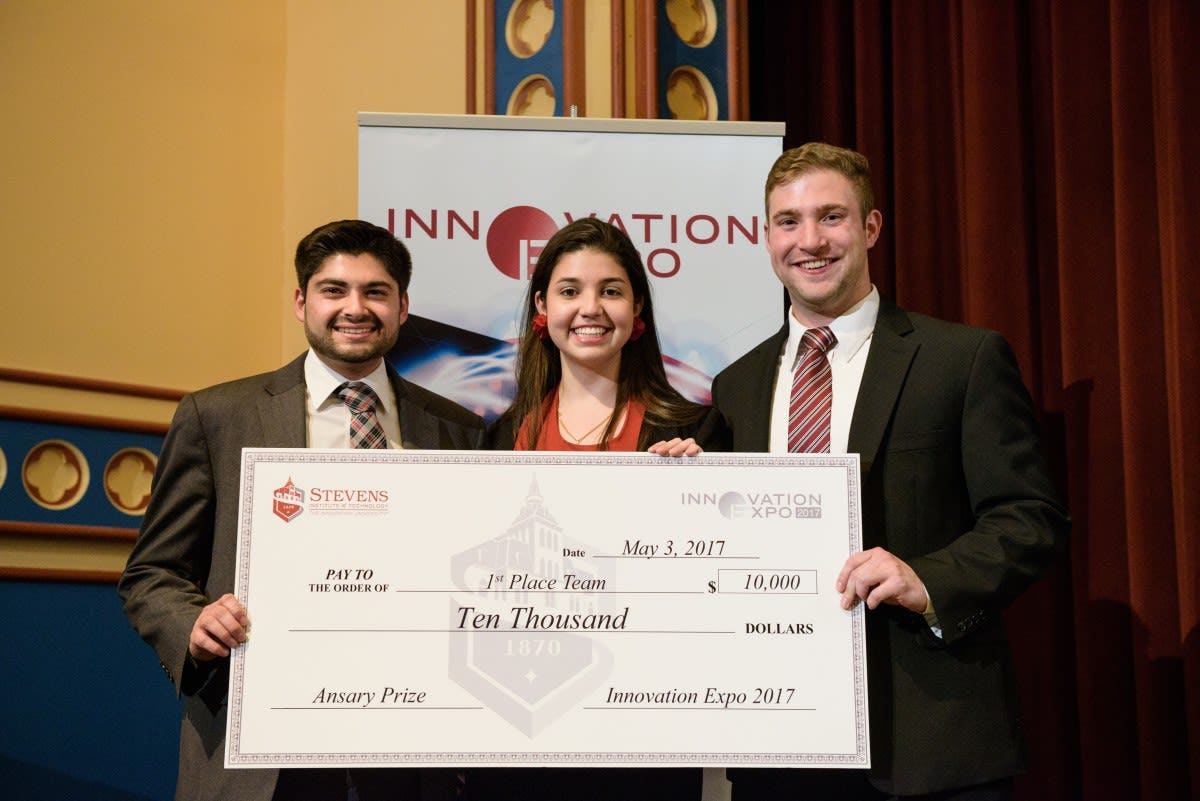The ingenuity and inventiveness of Stevens Institute of Technology students and faculty were on full display May 3 at the university's Annual Innovation Expo, a showcase of innovation and entrepreneurship featuring an array of senior design projects, research presentations by faculty and invited industry leaders, a keynote speaker and the crowd-pleasing elevator pitch competition.
Scores of visitors, including members of the Stevens community, local and national entrepreneurs, distinguished guests and media gathered to learn more about the scientific discoveries and inventions taking place at Stevens, and to ask questions from the individuals behind those innovations.
Spread across four venues on the university’s 55-acre campus, 133 senior design projects represented disciplines from the university’s four schools – the Schaefer School of Engineering and Science, the School of Business, the College of Arts and Letters and the School of Systems and Enterprises – and fell under one of four categories: energy, defense and security, healthcare and wellness, infrastructure and sustainable systems.
A mobile health future
At Stevens’ Babbio Center, Dr. Kamran Sayrafian, a program manager at the Information Technology Laboratory of the National Institute of Standards and Technology (NIST), gave a stimulating research talk titled “Human Body, the Final Frontier,” which centered on the promising wireless technologies that could allow patients to be monitored continuously without having to be at a hospital or care facility. Sayrafian spoke about the possibility of continuously gathering and processing a variety of important health or physiological data of patients through body area networks (BAN) that work in concert with miniaturized electrical devices placed in wearable and implantable sensors. There is a host of technology- and system-level issues to sort through before the potential of this very complex multidisciplinary field can be fully realized, said Sayrafian. The need for human subject involvement, energy limitation and interoperability issues are just some of the many challenges these new technologies currently face, he says.
A lesson in entrepreneurship: separating the chefs from the cooks
Described by Vice Provost Mo Dehghani as the “crown jewel” of the Expo, the Thomas H. Scholl Lecture by Visiting Entrepreneurs featured superstar science blogger Tim Urban. Making his third appearance at Stevens, Urban is the creator of the long-form, stick-figure-illustrated blog "Wait But Why." His extraordinary talent for simplifying the complex was evident last fall when he delivered a talk at Stevens in which he connected the Big Bang Theory, evolution, space travel, artificial intelligence and the future of mankind in just a little over an hour.
So it’s no wonder that he is Elon Musk’s favorite “explainer of things.” Urban was recruited by Musk to explain through his popular blog the motivation behind the launch of such companies as Tesla and SpaceX.
Urban was called to service more recently by the billionaire entrepreneur to describe Musk’s latest venture – Neurolink, a brain interface company that aims to link brains with computers in order to create an AI layer within the human mind.
Musk was the subject of Urban’s talk for the Scholl Lecture – “The Cook and the Chef: What We Can Learn from How Elon Musk Thinks.”
The distinction between chefs and cooks, according to Urban, is that “chefs write the recipes,” whereas “cooks follow the recipes.” Departing from conventional thinking is what has allowed Musk, and other great entrepreneurs like him, to create innovations that spawn entire new industries, according to Urban.
Applying the chefs vs. cooks theory to his own success, Urban says the ability to think like a chef was what led him to break the rules when he started his blog. His lengthy posts, which stretch beyond 3,000 words, flies in the face of conventional wisdom that long-form content is incompatible with a world where people communicate in 140 characters or less. Combining humor, stick-figure drawings and high quality writing, Urban’s blog receives more than 1 million unique visitors each month and has more than 440,000 email subscribers.
Prize-winning elevator pitches
This year’s Expo closed in dramatic fashion with an exciting Elevator Pitch Competition, a high-stakes contest in which student teams have three minutes to persuade prospective investors to help them turn their senior design projects into effective businesses. At stake was $17,500 in total prizes made possible by the generosity of the Ansary Foundation.
The panel of judges comprised business, academic and community leaders: George Abraham, founder and CEO of Rhodium Strategies; Brad Ansary, managing director of Ansaco; Sandra Doran, CEO of Castle Point Learning Systems; Jonathan Hakakian, managing director of SoundBoard Angel Fund; Roman Malantchouk, founder and CEO of walkTHIShouse; Darren Riva, director of brand management and product development at Pfizer; Stephen Socolof, managing partner at New Venture Partners; Joseph Yaccarino, executive vice president of operations of the Musculoskeletal Transplant Foundation; and Hoboken Mayor Dawn Zimmer.
Scored on two metrics — presentation and feasibility — ten teams competed for first ($10,000), second ($5,000) and third ($2,500) place awards.
The first place winners were Maria De Abreu Pineda, Andrew Falcone and David Ferrara, the trio behind CerebroSense, a device that can monitor and measure exposed brain tissue from a distance, thereby reducing the risks that come with the traditional method of directly touching the brain.
Mark Liotta came in second place for CardiLoop, a control system for adjusting the blood flow of heart patients with left-ventricular assist device (LVAD) implants.
Rounding out the top three was the team behind SoPure – Maria Gomez-Botero, Megan Kohr, Kristina Miller, Christina Sciarra and Danai Argyri – a solar-powered water purification system aimed at combating clean-water and power scarcities around the world.
The audience also weighed in with their take on the team presentations via the Stevens Innovation Expo 2017 app downloaded on their phones. Their pick for the best elevator pitch went to the team behind Knee3D, a wearable device for measuring the range of motion in knee flexion and extension for people who have had knee replacement surgery.
Innovation Expo 2017 concluded with an outdoor reception where attendees had an opportunity to engage with student innovators, faculty and members of the entrepreneurial community.
To learn more about the projects from the 2017 Stevens Innovation Expo or become involved in supporting next year’s Expo, visit stevens.edu/research-entrepreneurship/annual-innovation-expo.





